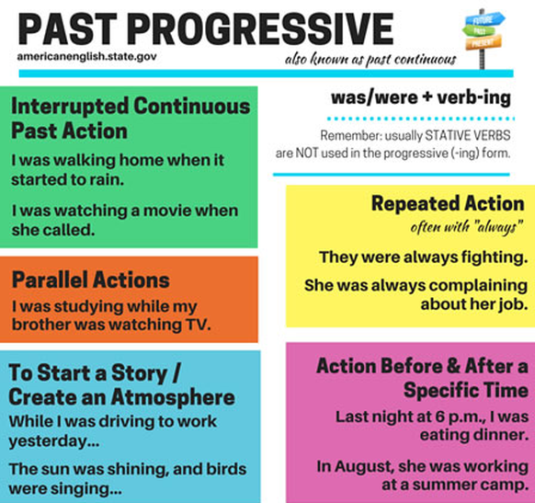
When to Use the Past Progressive Tense
The past progressive tense, also called the past continuous tense, emphasises a continuing or incomplete action in the past. We can use this tense to describe what was in progress at a specific moment in time in the past. It is formed with the past form of the auxiliary verb be (was/were), and the present participle or -ing form of the main verb.

Simple Past And Past Progressive
The past progressive tense is used to refer to an ongoing past action that was interrupted by another past action (in the simple past tense) or to two past actions that were taking place at the same time. It can also be used to indicate that something was habitual (usually in a critical way). Examples: The past continuous tense
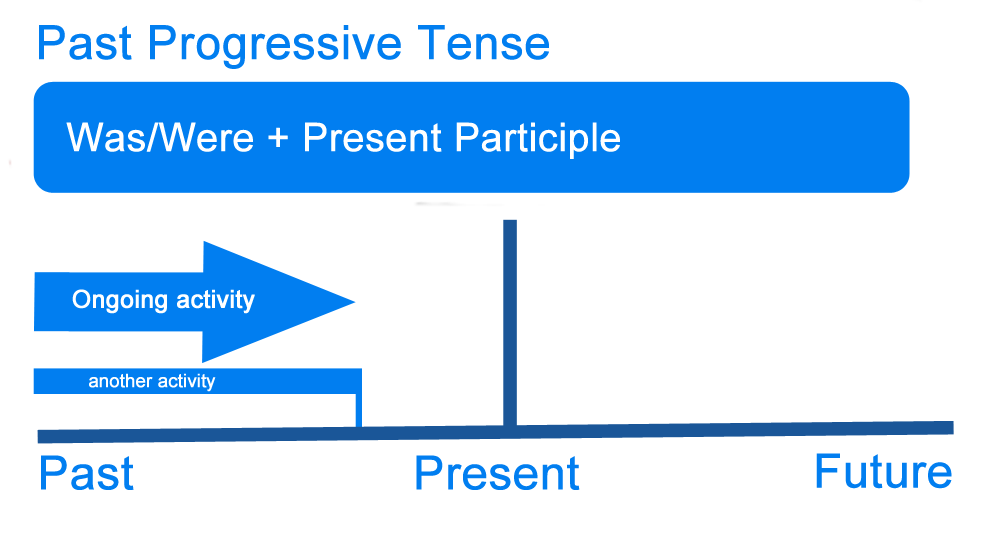
What is the Past Progressive Tense? Definition, Examples of English Tenses Writing Explained
Past Progressive is used for actions in the past and focusses on the course or duration of the action. Action taking place at a certain moment in the past Being in the middle of doing something at a certain time in the past. Examples: At two o ' clock, Carla was preparing the contract. Yesterday I was looking for Mister Miller ' s phone number.
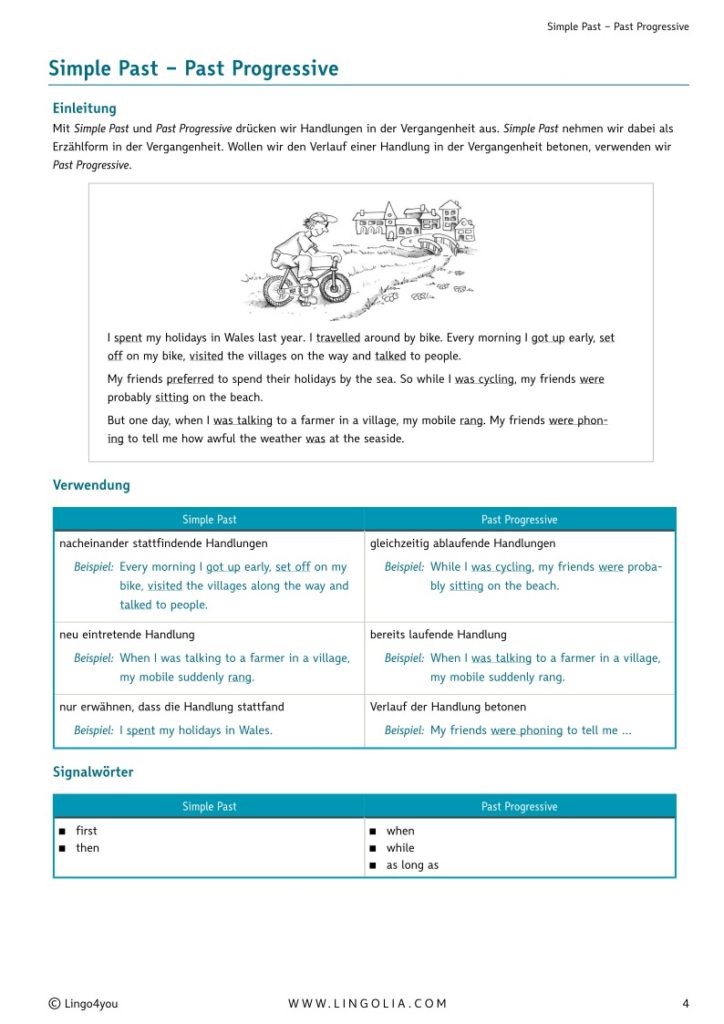
Gegenüberstellung Simple Past Past Progressive Lingolia Shop
Past Progressive 1. Verwendung des Past Progressive / Past Continuous 1.1. Handlungen dauerten zu einem bestimmten Zeitpunkt der Vergangenheit an (waren im Verlauf) Peter was reading a book yesterday evening. (Peter las gestern Abend ein Buch. - Peter war dabei, das Buch zu lesen.)

PPT Progressive Tenses PowerPoint Presentation, free download ID4757135
Here are three common uses of the past progressive tense: (1) The past progressive tense can be used to describe an activity in the past that was interrupted: He was painting the door when a bird struck the window. They were sleeping when the alarm went off. (2) The past progressive tense can be used for describing an action taking place when.

PPT Past progressive PowerPoint Presentation, free download ID3601449
The past progressive describes an action that was in progress at a specific time in the past. It can be used: To describe an action that started in the past and was interrupted by another action: He was writ ing an e-mail when the phone rang. When the phone rang, he was writ ing an e-mail. While he was writ ing an e-mail, the phone rang

PPT Past progressive PowerPoint Presentation, free download ID3601449
Past Progressive Past Progressive 1. Use of the Past Progressive 1.1. actions were in progress at a special time in the past Peter was reading a book yesterday evening. 1.2. two actions were happening at the same time (the actions do not influence each other) Anne was writing a letter while Steve was reading the New York Times.

simple past oder past progressive YouTube
Die kurze Handlung steht in der past simple, die lange Handlung in der past progressive. Beispiele: When Tom was cooking, he burnt his hand. They came home when she was studying for the test. 3. Zwei lange Handlungen, die zur gleichen Zeit in der Vergangenheit stattfinden. Für beide Handlungen wird die past progressive verwendet.
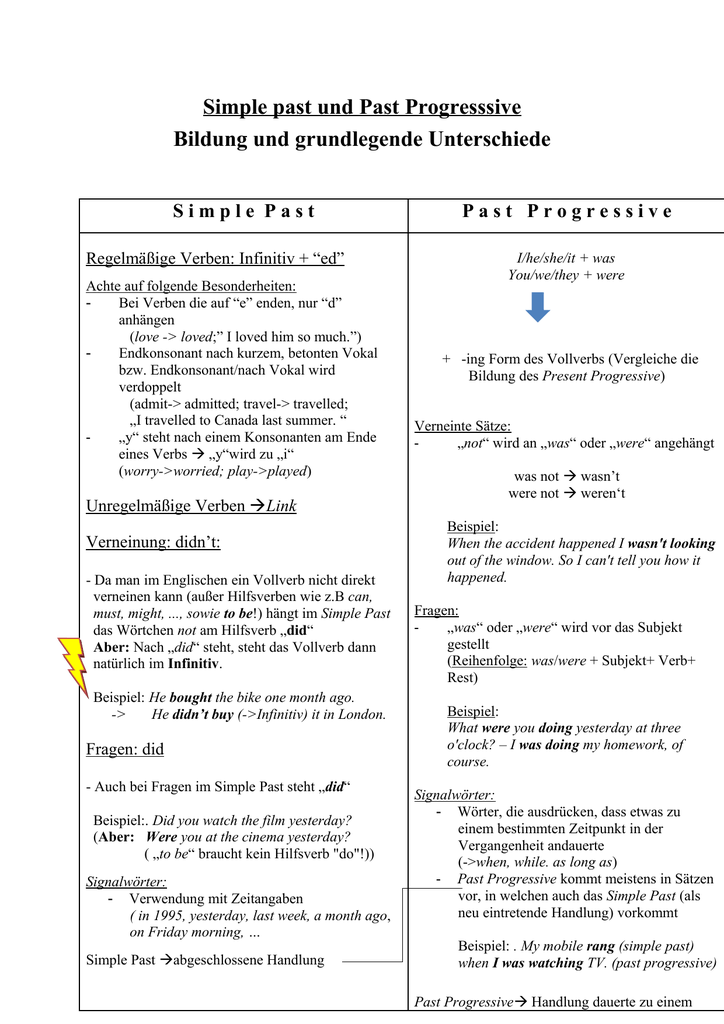
Simple Past Past Progressive Erklärung
Die englische Zeitform Past Progressive ist die Verlaufsform der Vergangenheit. Wir verwenden sie in folgenden Fällen: Lucy was sitting on the beach at six o'clock yesterday. Gestern um sechs saß Lucy am Strand. While Lucy was relaxing on the beach, Laurence was sailing. Während/In der Zeit als Lucy sich am Strand erholte, segelte Laurence.

Simple Past and Past Progressive, Definition and Example Sentences Simple Past and Past
Past Progressive: Bildung, 10 Beispiele + 30 Übungen Anna Galati (Fachredakteurin) Das Past Progressive gehört zu den englischen Zeitformen, genauer gesagt zu den sogenannten Verlaufsformen. Wie du es richtig bildest und verwendest, verraten wir dir in diesem Artikel anhand ausführlicher Erklärungen und Beispielen.
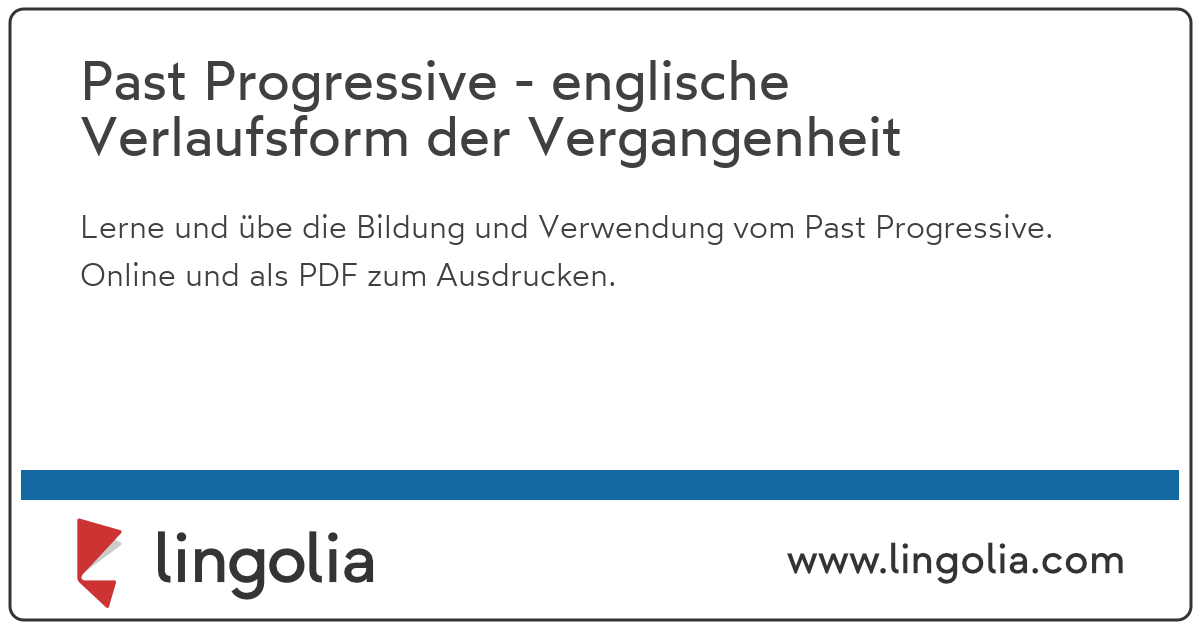
Past Progressive englische Verlaufsform der Vergangenheit
Questions and short answers in the Past Progressive - Exercise Task No. 4687 Put in the missing words and form questions and their short answers in the Past Progressive. Mind the example. Show example Do you need help? Questions and short answers in English Ann waiting for her friend when you saw her? → Yes, .

Past Progressive Bildung, 10 Beispiele + 30 Übungen
Past Progressive - Beispiele I was making dinner. He was playing chess. We were having an argument. Past Progressive - Verwendung & Beispiele zur Stelle im Video springen (00:47) Es gibt verschiedene Situationen, in denen das Past Continuous zum Einsatz kommt. Wann man das Past Progressive benutzt, siehst du hier:

Das past progressive Englisch YouTube
Use of Past Progressive. puts emphasis on the course of an action in the past. Example: He was playing football. two actions happening at the same time (in the past) Example: While she was preparing dinner, he was washing the dishes. action going on at a certain time in the past. Example: When I was having breakfast, the phone suddenly rang.
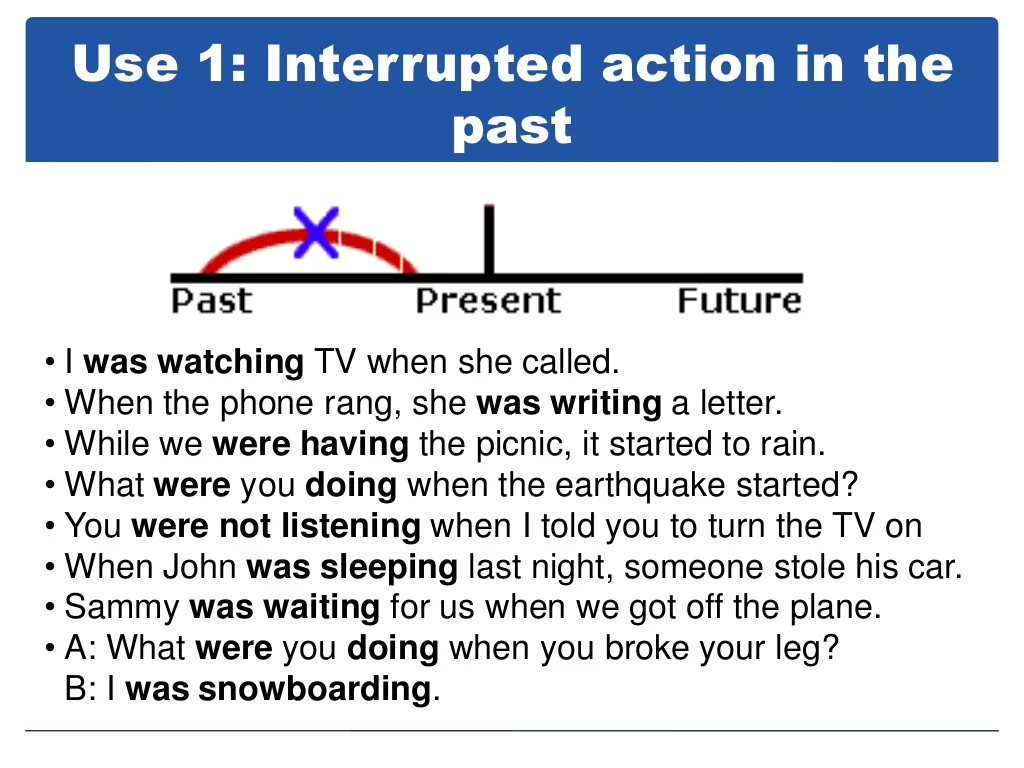
Past progressive
Das past progressive bildest du, indem du hinter das Subjekt des Satzes das Hilfsverb to be in der Vergangenheit ( was/were) setzt. Darauf folgt der Infinitiv des Vollverbs und die Endung *-ing*. → She was eating ice cream. Für einen verneinten Satz fügst du not vor dem Infinitiv ein. → She was not eating ice cream.

Past Progressive (Past Continuous) im Englischen
Im Folgenden haben wir nun ein paar Beispiele für dich. Beachte, dass du je nach Personalpronomen eine andere Form von " to be " verwenden musst! Bei den Personalpronomen " I " / " he " / " she " / " it " wird " was " verwendet: I was sit t ing at the table. He was washing the dishes. She was partying all night.

PPT Past progressive PowerPoint Presentation, free download ID3601449
Future Progressive Future Tenses Genitiv Englisch Gerund or Infinitive